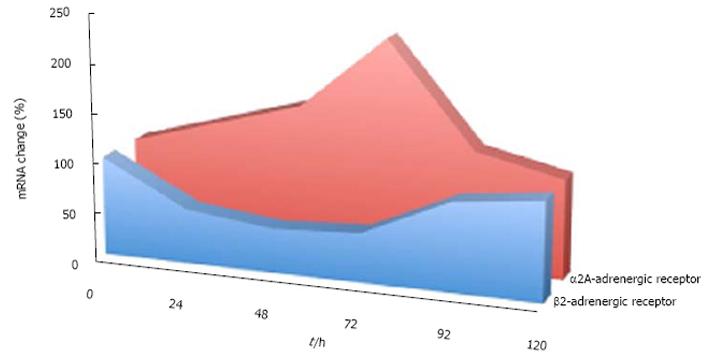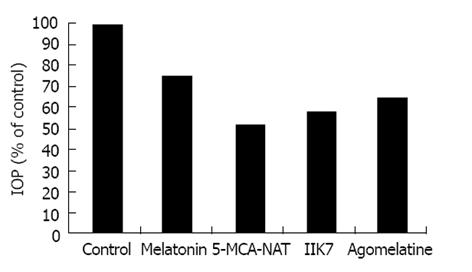Copyright
©2013 Baishideng Publishing Group Co.
World J Ophthalmol. Nov 12, 2013; 3(4): 32-37
Published online Nov 12, 2013. doi: 10.5318/wjo.v3.i4.32
Published online Nov 12, 2013. doi: 10.5318/wjo.v3.i4.32
Figure 1 Chemical structure of melatonin and analogues.
Melatonin (N-acetyl-5-methoxytryptamine), IIK7 (N-butanoyl-2-(2-methoxy-6H-isoindolo[2,1-a]indol-11-yl)ethanamine) and 5-MCA-NAT (5-methylcarboxyamino-N-acetyltryptamine).
Figure 2 Expression of mRNA levels in ciliary body cells.
The amounts of mRNA and concomitant adrenoceptors were changed after the application of 5-MCA-NAT. While there was an increase of α2A-adrenoreceptors (in red), there was a decrease in the levels of β2-adrenoreceptors (in blue).
Figure 3 Comparative effects of melatonin and analogues in an animal model.
Equal doses of melatonin or the corresponding analogues (100 μmol/L, 10 μL), reduced intraocular pressure in New Zealand white rabbits. Differences among the compounds rely on the activation of different receptors in each case (see text).
- Citation: Alkozi HA, Pintor J. Melatonin and derivatives as promising tools for glaucoma treatment. World J Ophthalmol 2013; 3(4): 32-37
- URL: https://www.wjgnet.com/2218-6239/full/v3/i4/32.htm
- DOI: https://dx.doi.org/10.5318/wjo.v3.i4.32











